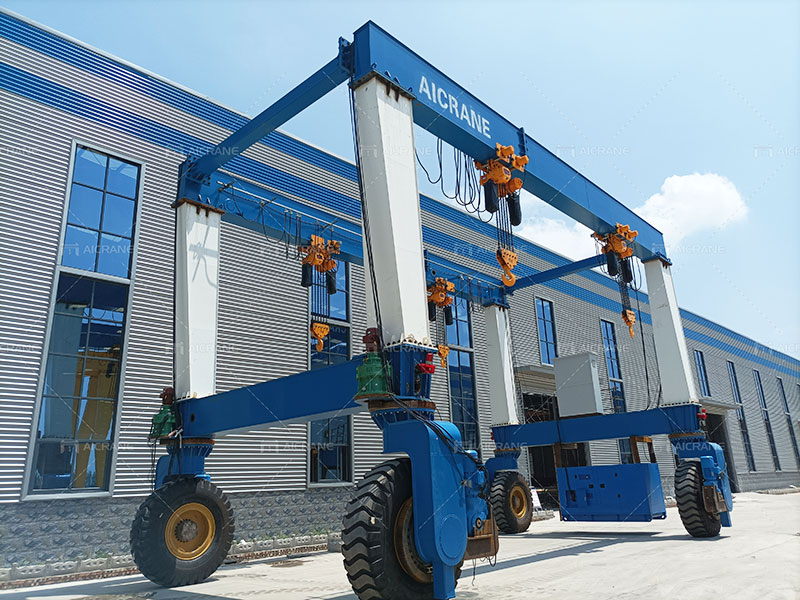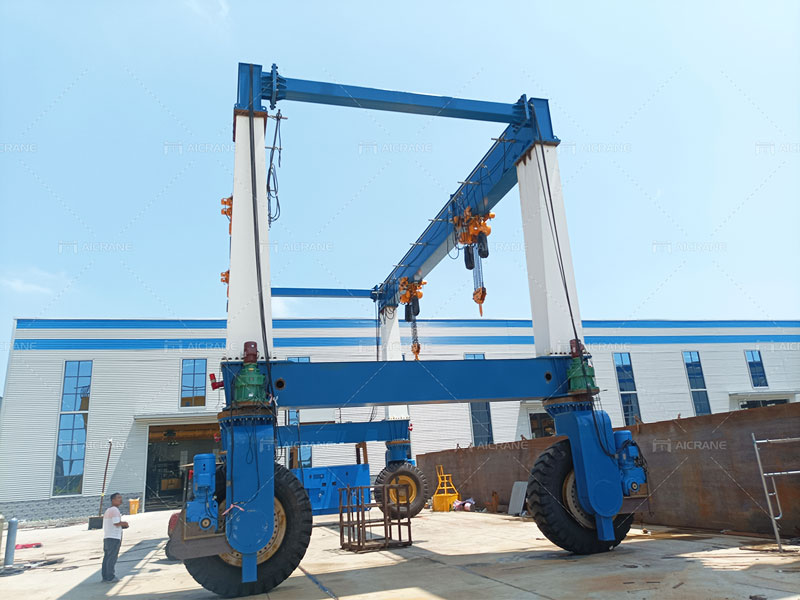In the realm of heavy lifting, safety and precision are paramount concerns that cannot be overstated. The Gantry Crane 50 Ton, with its formidable lifting capacity and versatile applications, stands as a cornerstone in various industries. However, the safe and precise operation of such a powerful machine requires careful consideration of several factors. This article explores the critical operating considerations for the Gantry Crane 50 Ton, emphasizing the importance of safety protocols, maintenance practices, and operational techniques to ensure optimal performance and minimize risks in heavy lift operations.
Understanding the Gantry Crane 50 Ton
Before delving into operating considerations, it’s essential to grasp the fundamentals of the Gantry Crane 50 Ton. This robust lifting equipment comprises a sturdy gantry structure supported by legs or wheels, equipped with powerful hoisting mechanisms and advanced control systems. With its ability to lift loads weighing up to 50 tons, this crane is deployed across a myriad of industries, including construction, manufacturing, logistics, and shipping.

Prioritizing Safety Protocols
Safety should always take precedence in the operation of the Gantry Crane 50 Ton. Comprehensive safety protocols must be established and strictly adhered to at all times. This includes conducting pre-operation inspections to ensure the crane and its components are in optimal condition, implementing lockout/tagout procedures when performing maintenance or repairs, and providing thorough training for crane operators(Козловой кран цена) on safe operating practices and emergency procedures.
Rigorous Maintenance Practices
Regular maintenance is essential to keep the Gantry Crane 50 Ton operating safely and efficiently. Scheduled inspections and preventative maintenance routines should be carried out to identify and address any potential issues before they escalate into safety hazards or mechanical failures. This includes inspecting critical components such as hoists, brakes, cables, and structural integrity, lubricating moving parts, and replacing worn-out or damaged components promptly.
Operator Training and Competency
Ensuring that crane operators are adequately trained and competent is crucial for safe and precise operation. Operators should undergo comprehensive training programs covering crane operation, safety protocols, load handling techniques, and emergency procedures. Regular assessments and evaluations should be conducted to assess operator competency and identify areas for improvement. Additionally, ongoing training and refresher courses should be provided to keep operators up-to-date with the latest best practices and industry standards.
Load Handling Techniques
Precise load handling is essential to prevent accidents, minimize damage to cargo, and maintain operational efficiency. Crane operators must be proficient in load calculation, rigging techniques, and proper load placement to ensure stability and balance during lifting and movement operations. Additionally, they should be aware of environmental factors such as wind speed, weather conditions, and ground stability that may affect load stability and adjust their operations accordingly.
Utilizing Advanced Control Systems
The Gantry Crane 50 Ton is equipped with advanced control systems that enhance safety and precision during operation. These systems provide operators with real-time feedback on crane performance(Козловой кран на пневмоходу), load status, and environmental conditions, enabling them to make informed decisions and adjustments as needed. Features such as anti-sway technology, collision avoidance systems, and load monitoring sensors help prevent accidents and ensure precise load positioning, even in challenging operating environments.
Environmental Considerations
In addition to safety and precision, environmental considerations play a significant role in the operation of the Gantry Crane 50 Ton. Operators must be mindful of the crane’s impact on the surrounding environment, including noise levels, air quality, and potential habitat disturbances. Implementing noise reduction measures, such as installing sound barriers or scheduling operations during off-peak hours, can help mitigate the crane’s environmental footprint. Additionally, using eco-friendly lubricants and adopting energy-efficient practices, such as reducing idle times and optimizing travel routes, can contribute to minimizing the crane’s carbon footprint and promoting sustainability in heavy lift operations.

Communication and Coordination
Effective communication and coordination among crane operators, riggers, signalpersons, and other personnel are essential for ensuring safety and precision during crane operations. Clear and concise communication channels should be established, including hand signals, radios, and visual cues, to facilitate smooth and efficient coordination of lifting activities. Regular safety briefings and toolbox talks can help reinforce safety protocols and ensure that all personnel are aware of their roles and responsibilities in maintaining a safe working environment. Visit website:https://gantrycrane.kz/
Continuous Improvement and Feedback
Continuous improvement is key to enhancing safety and precision in crane operations. Regular feedback loops should be established to solicit input from crane operators and other stakeholders regarding potential safety hazards, operational inefficiencies, and areas for improvement. This feedback can be used to identify trends, implement corrective actions, and refine operating procedures to enhance overall safety and efficiency. Additionally, conducting post-operation debriefings and incident investigations can provide valuable insights for preventing future accidents and optimizing crane performance.
In conclusion, operating the Gantry Crane 50 Ton(козловой кран 50 тонн) safely and precisely requires careful attention to a range of factors, including prioritizing safety protocols, implementing rigorous maintenance practices, providing comprehensive operator training, mastering load handling techniques, and leveraging advanced control systems. By adhering to these operating considerations and continuously monitoring and improving safety practices, crane operators can ensure optimal performance, minimize risks, and maintain a safe and efficient working environment in heavy lift operations.